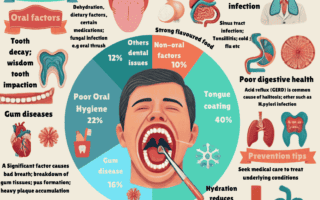How conscious breathing technique alleviate dental fear
In the Part One series, remember that meditation is a practice to train our mind, to re-condition our thoughts by shifting our focus into the present moment. I hope you would have already listened to my part one, 5-minute guided meditation, which is designed to help you better prepared yourself for the upcoming dental treatments.
From here, we are going to take a more proactive approach to combat the fear arising towards dental treatments. No worries, you don’t have to begin a war in the dental office to overcome this challenge. On the contrary, in order to tap into our warrior potential, all you have to do just sitting back, mindfully practicing specific breathwork to calm your nerves and be able to feel at ease again.
I sincerely invite you to take a glimpse of my book <The Zen of Teeth> , which you find your best tailor-made oral health care routines to optimise your wellness.
“Take a deep breath” doesn’t help
But,
You have to understand WHY it helps

Understanding our Autonomic Nervous System
Our nervous system controls and coordinates all functions happening in our body. It subdivdes into two main parts: Somatic nervous system which involves in our voluntary movements such as walking, exercising ; perceiving sensations. e.g. pain, temperature etc. The second part: The autonomic nervous system is a self-regulatory system that controls and regulates our internal organs involuntarily without our conscious involvement.
Our anutonomic nervous system further divides into two antagonistic sets of nerves, the sympathetic (SNS) and parasympathetic nervous systems (PNS).
Sympathetic Nervous system (SNS), the moment when you are anxious:

This is the moment when our sympathetic nervous system (SNS) is stimulated. Our body engages into the “Fight or flight” response, in order to redistribute energy effectively encountering potential threats. Our body interprets these signals as an emergency situation. Hence, these nerves prepare us to cope with these stress by increasing the heart rate, increasing blood flow to the muscles, and decreasing blood flow to the skin. Nevertheless, our thoughts alone can trigger this stress response despite the fact that real threats may not actually happen.
Parasympathetic nervous system PNS  calm our nerves down
calm our nerves down
The parasympathetic nervous system regulates our body in a relaxing state, this is our ultimate goal by utilising our breaths allowing our body to come out from the high intensity “fight or flight’ mode. Once our PNS is stimulated, these nerves reduce blood pressure and the heartbeat. Hence, we are entering into a calmer state of mind.

“As you breathe in, cherish yourself. As you breathe out, cherish all beings.”
Dalai lama
What is Dental fear?
Anxiety, fear or worries all belong to the category of emotion. Breaking down the word E* Motion which literary means Energy in Motion. You may perceive emotion as a sense of feeling, but indeed emotion is a powerful force embedded in our subconscious mind which fuels our body to make certain decisions or action. One classic example, when you are in a place of danger, the fearful sensation in your mind subconsciously direct your body to get out of this situation as quickly as possible.
As in the case of dental Fear, it is an emotion that is specifically towards dental treatments or settings. Furthermore, it may reveal some underlying issues like fear of pain/ needles, unpleasant sensation to our body etc. These emotions store in our subconscious mind. Therefore, whenever someone is suffering from dental fear, the emotion they perceived then leads to reactions such as procrastination to seek dental treatment, over-reaction to discomfort or even losing control to cope with the situation. It is a barrier that prevents us from anchoring to the present moment.
To come out from this emotional attachment, I summarise four keys points that transform fear into empowerment.
- Awareness of your fear. Life begins to change the moment when you start noticing your thoughts.
- Willingness to change. Your dental health is an integral part of your overall wellbeing. Besides, Desire is a powerful emotional energy!
- Shift your perspectives. Redirect your attention to higher goals. Instead of thinking what you don’t want, think about what you actually want. For example, thinking about having a set of well-aligned teeth, freely enjoy your meal with functional teeth, or simply a beautiful smile shining in front of your friends and family.
- Persistence to practice inner work. These include various mindfulness techniques, breathwork , building up trust in yourself as well as the dental professionals. Most importantly. Compassion to yourself. Since any change would require time to let the magic happen. With regards to recent neuroscience research, it is estimated that it takes around 3–6 months for a new behavior to become a habit.
How to get there?
As mention before, the essence of the mindfulness breathing is to trigger our parasympathetic nervous system. It is one of the most profound skills which are available to us at anytime and anywhere. Whenever you encounter a stressful situation, practice this breathing exercise with devotion. Trusting your body and connect to your inner self.
It is absolutely normal that our thoughts fly randomly in our mind during the practice, perhaps our mind keeps lingering on fearful objects or sound which may arouse your dental fear. This is the moment to cultivate a new relationship to this feeling, as an observer, to observe this particular sensation at a distance passing in front of your eyes. Trust that you are in a protected and safe environment at this present moment. Leave this sensations pass and shift our focus back into our breath. It is an essential step in getting rid of the dental fear.
As I always believe that Self-care is the new future. The moment is now. So let’s get started.

Part 2 guide meditation
7-minute breathing exercise



